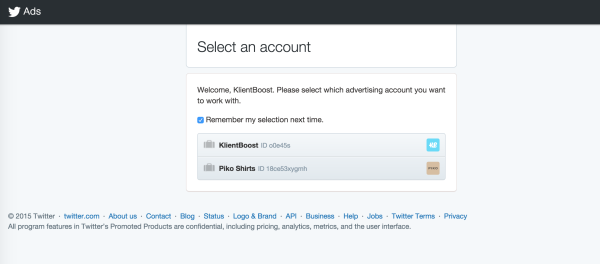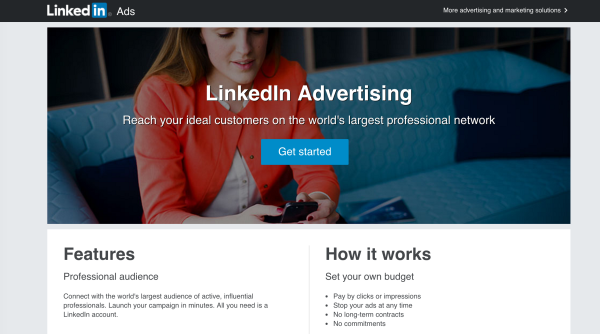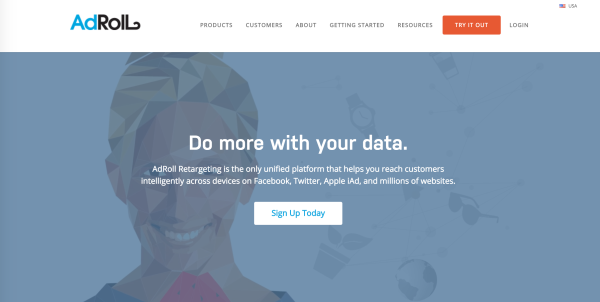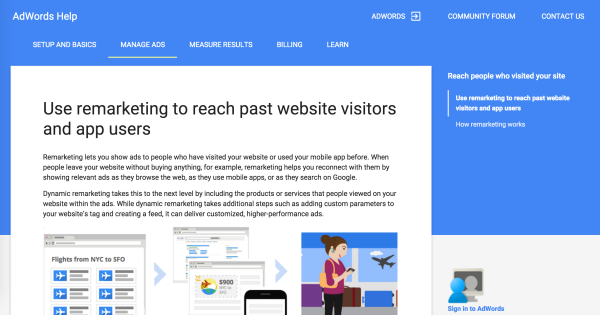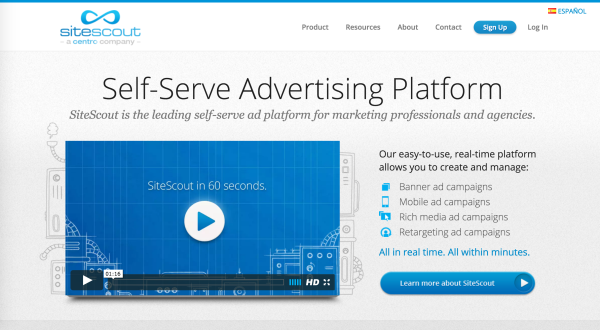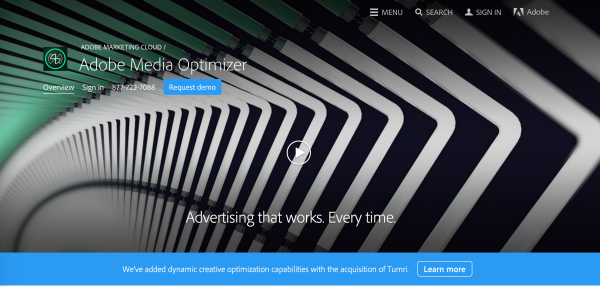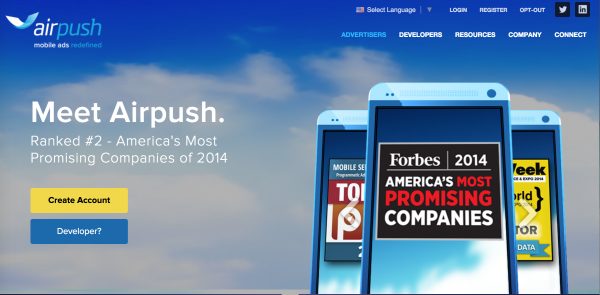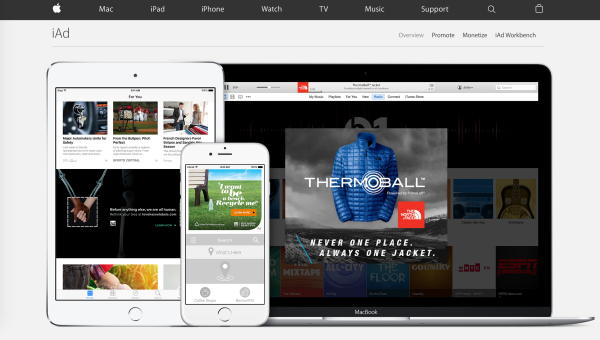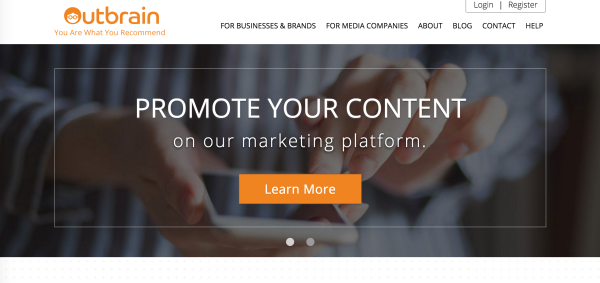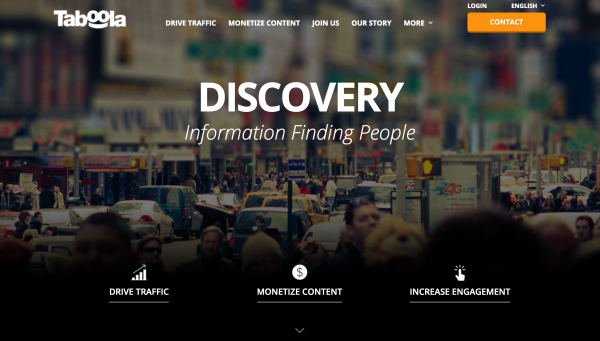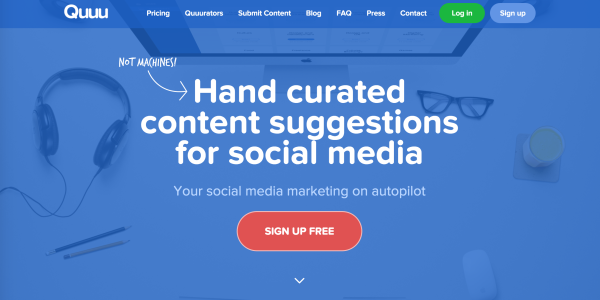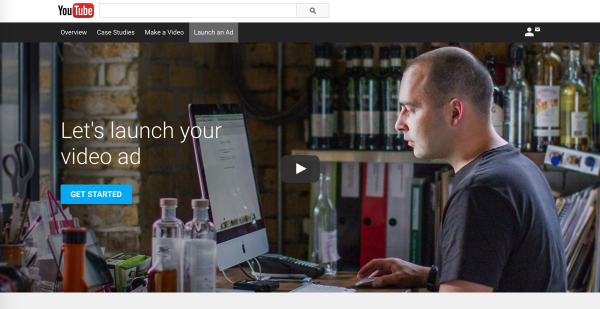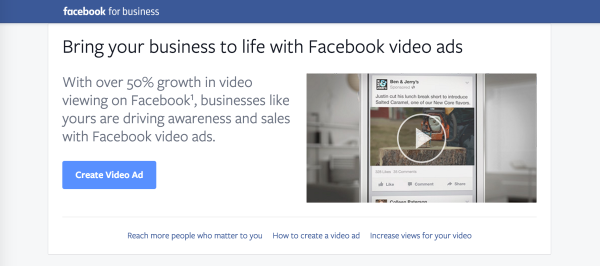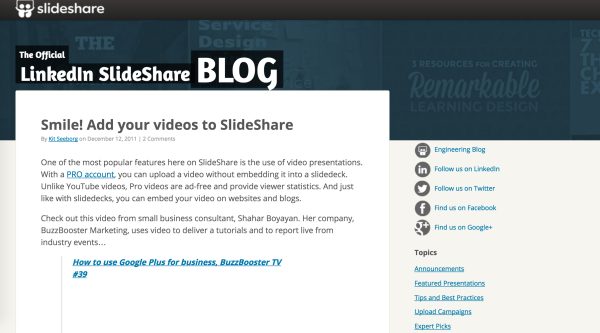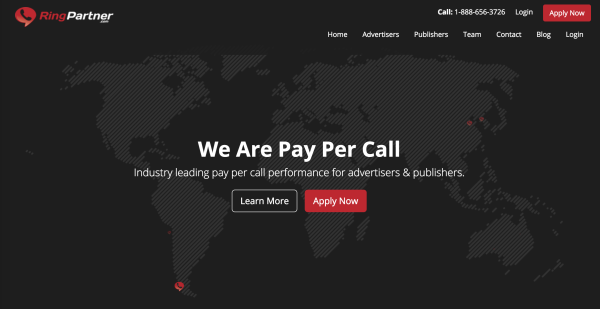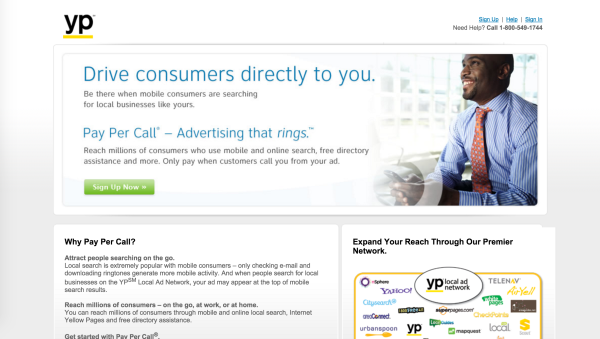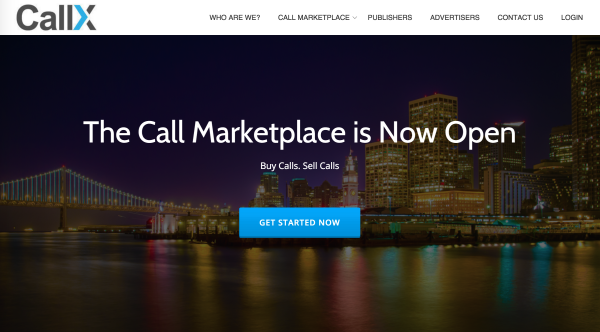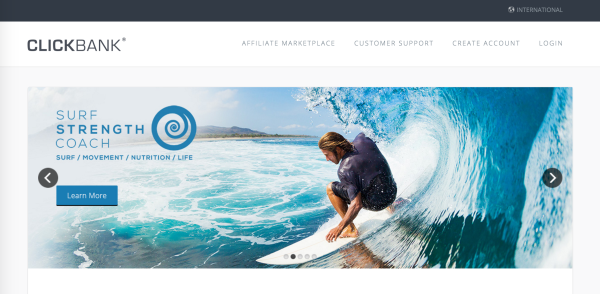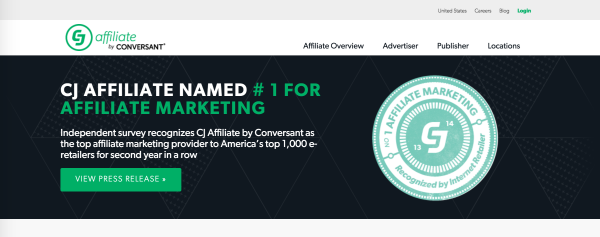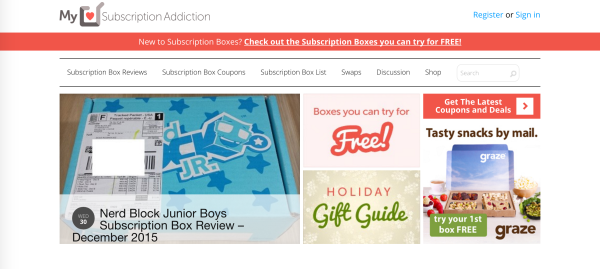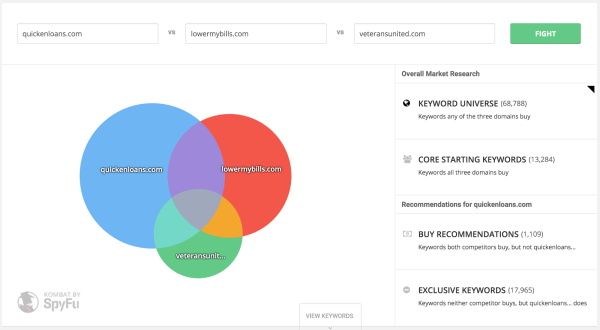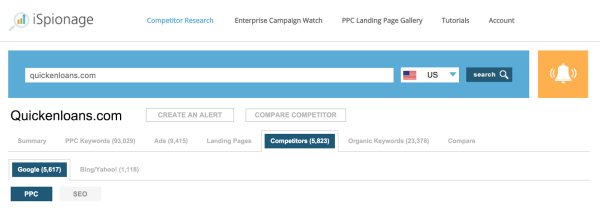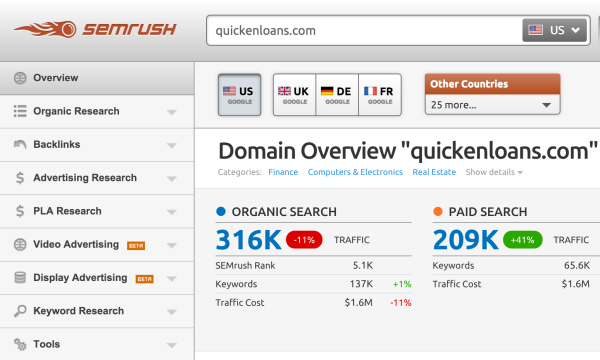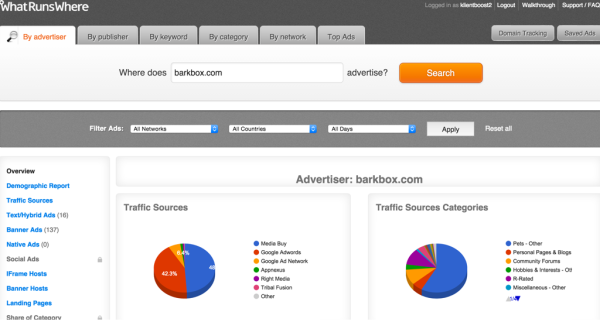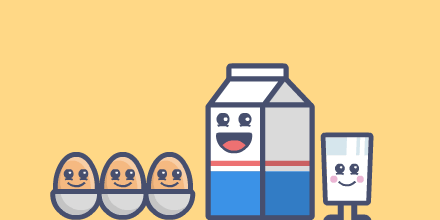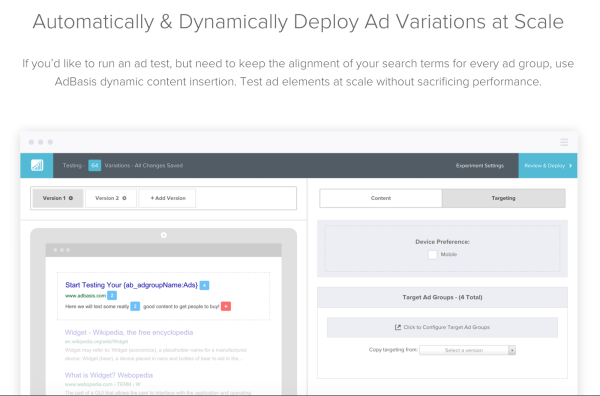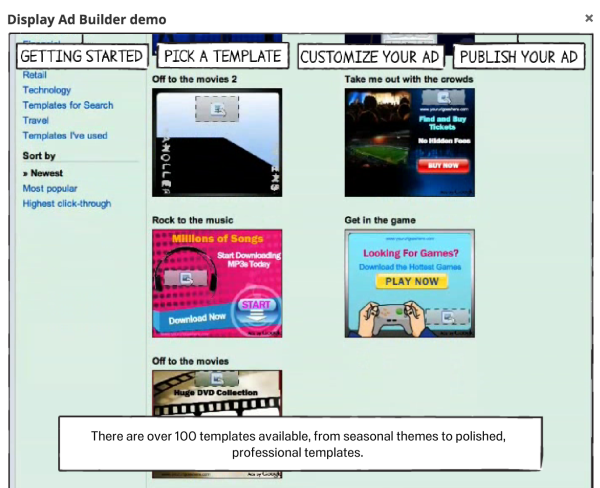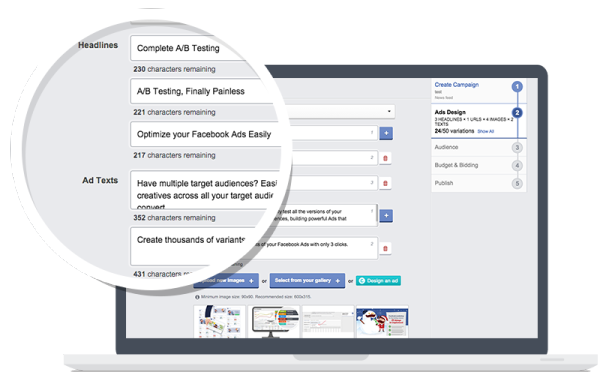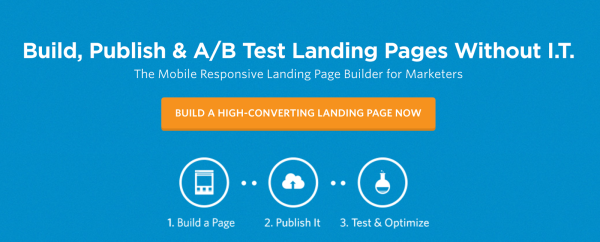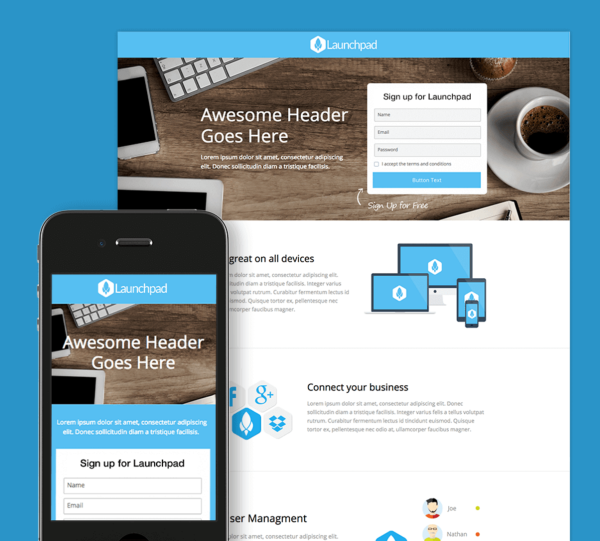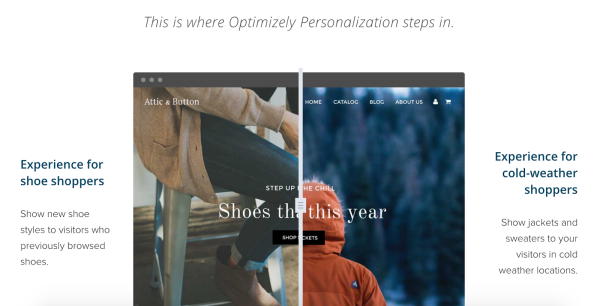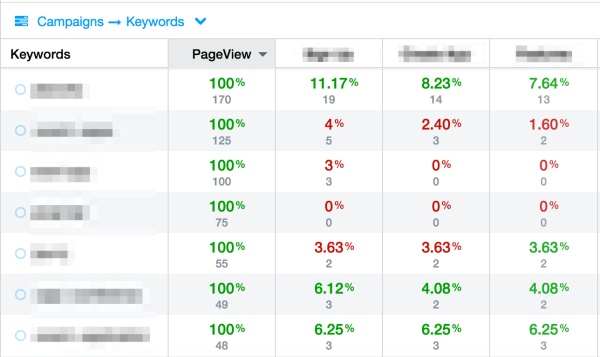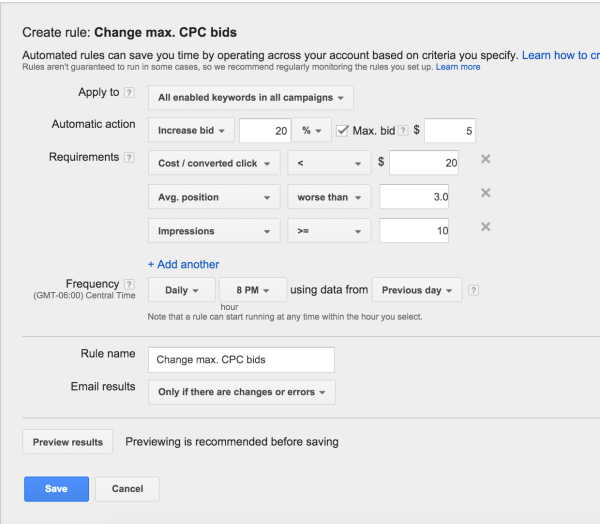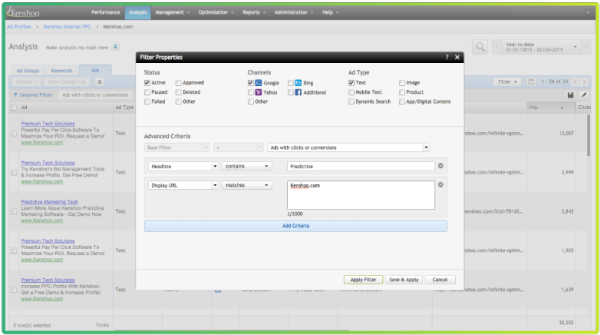You may have come across the term PPC marketing before.
Whether you're an eCommerce brand trying to boost your online sales or you're an enterprise SaaS company looking to generate more leads and demos for your sales team, PPC marketing is a great way to increase awareness, demand, and leads.
Plus, if you really know what you're doing with your PPC marketing, your campaigns will directly contribute to generating revenue.
But what exactly does PPC marketing entail?
Why should you choose PPC advertising over other digital marketing strategies? What are the benefits of PPC — of all the different digital marketing channels, what makes PPC so special?
And, given that PPC is a pay-to-play style of marketing, how do you maximize your returns?
This post will answer all these questions and give you a solid foundation for building your PPC strategy. We’ll cover the "complete PPC food pyramid" to make sure you have everything in your paid advertising diet that you could possibly need.
Let's get started.
- What Is PPC Marketing?
- Pros & Cons of PPC Marketing
- The PPC Marketing Food Pyramid
- PPC Channels + Networks (6-11 Servings)
- Programmatic PPC Marketing
- Mobile/App PPC Marketing
- Content PPC Marketing
- Pay Per Call PPC Marketing
- Keyword + Targeting Options (Infinite Servings)
- Ad Creation + Split Testing (Infinite Servings)
- Landing Page + Conversion Optimization (2-3 Servings)
- PPC Analytics + Scripts + Bidding (2-3 Servings)
- What’s Next?
Get brand new PPC strategies straight to your inbox every week. 23,739 people already are!
What Is PPC Marketing?
PPC stands for pay-per-click. In its simplest definition, PPC marketing is when advertisers pay for user clicks on their ads in the Google Search Network, Google Display Network, or other paid advertising channel.
As opposed to Search Engine Optimization (SEO), which is considered an "organic" digital marketing strategy, PPC marketing is a "paid" strategy. In SEO, you don't pay for the traffic you generate because users click on the organic links that rank on the search engine results page (SERP) of Google.
PPC, on the other hand, asks users to click on the ads at the top and bottom of the SERP. You can see a screenshot of the difference below:

For these ads, advertisers are charged each time a user clicks. PPC managers bid on specific keywords that will trigger their ads to show based on their bid, quality score, and a number of other factors. These factors determine where your ad will show on the SERP.
This also means that, with PPC, you can't generate wasteful, click-baity traffic.
Why is that? Because when you're paying for each click, you want to be making money off as many clicks as possible. The more empty traffic your PPC ads generate, the more money you throw on the pyre without generating new revenue.
So how do you maximize the right type of clicks and traffic in PPC and then maximize the conversion rate of that traffic to increase conversions/sales? Well, that's what this post will teach you -- so eat up ;) .
Pros & Cons of PPC Marketing
So we've covered the basics of what exactly PPC is. Now, let's take a look at some of the pros and cons of choosing this paid advertising strategy over an organic strategy such as SEO or content marketing.
PPC Marketing Pros
One of the biggest and most obvious pros of paid campaigns versus organic campaigns is that paid campaigns can be easily tracked and measured.
It can sometimes be difficult to tell if an organic optimization and jump in ranking has led to more reads and hopefully more conversions or sales. But with PPC, everything is measured. It’s just a matter of clicking to the right tab in Google Ads or Analytics to see which change or variant caused which increase in conversions, and by how much.
PPC also is known for quicker results than organic strategies.
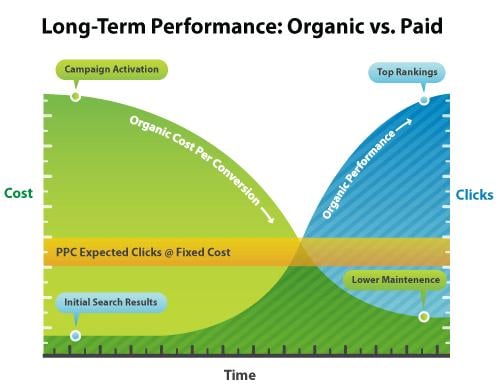
For SEO and content marketing, you need to wait for Google to scrape your page, rank it, and for traffic to gradually accumulate to increase its ranking. In PPC you can immediately pay to show at the top of the page where the majority of user attention lies — hence, quicker results.
The third big "pro" for PPC marketing is that it offers retargeting campaigns.
What is Retargeting?
Retargeting is the ability to advertise directly to a user who has previously visited your site or clicked on one of your ads. This is an incredibly powerful marketing tactic and can generate a drastically higher conversion rate than normal campaigns.

Retargeting, or remarketing in some circles, is more effective than ordinary PPC campaigns, because it specifically targets audiences that have already shown interest in your brand and/or intent to convert/buy.
Instead of advertising to a completely cold audience and relying on keywords to measure intent, you’re tapping into a proven qualified audience instead.
All of these PPC benefits allow you to maximize the ROI (return on investment) of your campaigns. When you’re in the paid advertising space, you can't afford to burn money on traffic without generating revenue. This is where ROI-driven PPC strategies truly shine.
PPC Marketing Cons
I've raved quite a bit so far about the benefits of PPC marketing.
But that doesn't mean it doesn't come with its drawbacks. The most obvious can be found in the name itself:
You have to pay per click.
This can be a daunting issue for small, local businesses. On top of that, if you aren't optimizing your campaigns and performing consistent CRO, you're going to see these campaigns hemorrhaging money, which can be even more costly and stressful. After all, it’s not just about getting traffic, but getting qualified traffic that actually converts.
Another big barrier of entry for the PPC world is the complexity of the Google Ads platform. The platform got a pretty big overhaul in 2018 that took some getting used to. It's no cake-walk, and it can require a unique blend of right-brain and left-brain thinking to excel.
A true PPC expert will not only be able to analyze hard data and optimize based on scientific keyword research and A/B testing, but she or he will also be able to tap into the human aspect of ad copy to engage users and increase engagement.
Not only that, but she or he will be able to keep all of this in balance when a large ad budget is on the line.

In the end, you'll see that the pros of PPC far outweigh the cons so long as you know what you're doing and how to optimize your paid marketing strategies towards the right goals.
Now that you know the basics of what PPC marketing is and why it's so valuable, we can dive into the intricacies of PPC management. This is where you will get the real value from this blog post — the comprehensive framework around which you'll build a winning PPC strategy.
The PPC Marketing Food Pyramid
The world of PPC management can be overwhelming.
Just like the 47 different types of milk available at your grocery store, there are twice as many PPC marketing channels to choose from. (I found 72. And there are probably more.)
You have no shortage of options, but you need to know which PPC channels will work best for your specific goals. And after that, which keywords, ads and landing pages work best as well.
Additionally, understanding which channels, keywords, ads, and optimized landing pages to use is just the beginning. If you use all the PPC food groups in the right way, with the right portions, then you’ll be able to get the highest ROI possible.
That’s what this article and the gifographic below will help you with.

Let’s take a look at the PPC Food Pyramid first:
[xyz-ihs snippet="PPC-Food-Pyramid-New"]
PPC Channels + Networks (6-11 Servings)
Wouldn’t it be easy if you could eat the same delicious thing over and over again and never get tired of it?
I kinda feel that way about PPC. If it was as simple as just using Google Ads all the time, I’d be ecstatic.
Google Ads management may be the biggest SEM marketing channel out there -- but as I mentioned earlier, there’s plenty of other platforms to choose from beyond Google Ads.
But be careful. Using too many PPC channels doesn’t lead to a well-balanced diet.
(Just like eating too much bread won’t help you lose weight. Trust me, I’ve tried.)
Instead, begin with a few and see how they perform.
Once you find a winning PPC channel, experiment with a new one. The more you diversify your PPC traffic sources, the better.
For the sake of not going overboard, I’ve highlighted three individual PPC networks within the different PPC channels. Then, I added some additional ones for further reading if you’re interested.
Let’s get started.
Search Engine PPC Marketing
We’re going to be looking at search engines, display networks, and even some PPC channels you may never have heard of.
But the first one you probably have.
Google Ads
Here are some relevant facts about Google Ads:
- You can target ads to customers in certain countries, regions or cities.
- It’s by far the biggest search engine out there with the biggest reach.
- It claims to reach over 90% of all Internet users. The Google Ads platform also owns almost 80% of all search traffic in the United States.
The Google Ads platform allows you to bid on those searches that bring direct traffic to your site or landing page in the hopes of a conversion.
Microsoft Advertising
In March of 2018, Microsoft Advertising (formerly Bing Ads) officially achieved a search engine share of 23.7%.
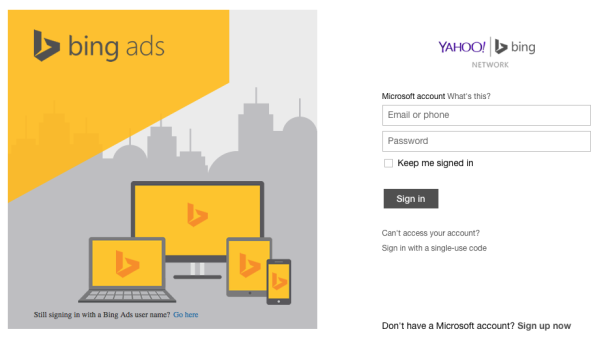
Just like the Google Search Network, you can also bid on certain keywords within the Bing and Yahoo! search engines to have your ads appear.
Even with lower traffic volumes compared to Google, Microsoft Ads can be particularly profitable for advertisers targeting older demographics and overall, has lower average cost per clicks.
Other PPC Search Engines
Already using Google Ads and Microsoft Ads?
No worries! Here are some more PPC search engines that are less saturated than the ones mentioned above (but keep in mind that the targeting abilities can be worse):
Social Media PPC Marketing
Social media networks have claimed an important space in our daily lives in a relatively short amount of time.
What most people don't realize, however, is that PPC marketing is one of the most important engines driving that growth -- both for businesses and the social channels themselves.
If you didn’t already know, Facebook is the fiercest competitor Google has ever faced when it comes to PPC marketing.
With 88% of their advertising revenue coming from mobile devices in 2018 (a 23% jump since 2014), Facebook has capitalized on targeted PPC ads.
The biggest thing that will differentiate search engine PPC and social media PPC is the omission of keyword intent on social networks.
But if you know your target market and demographic well, Facebook ads could be as much or more profitable than any other PPC platform out there.
If most of your target audience is hanging out on Twitter, then leading with educational content could be the best way for you to get more conversions.
Allowing you to bid on competitor followings and other targeting criteria, Twitter ads can be a great source either through direct targeting or retargeting.
One thing to keep in mind though, do not use hashtags or mentions in your Twitter ads since it could reduce your click-through-rate by 23%.
If you’re in the B2B space and want to target people with specific job titles, LinkedIn may just be your favorite PPC playground.
Allowing you to target based off company size, the use of exclusions, and more, LinkedIn PPC ads can be perfect for you if you’re average conversion means high revenue.
Average cost per clicks can easily range anywhere from $4 – $10 since you’re competing in the same news feeds as other “professional” advertisers.
LinkedIn’s higher CPC is due to the fact that they claim their audience is simply “better,” because of the professional networking focus of the platform.
Also, because of their restricted user base (far more average consumers use Facebook daily than login to their LinkedIn profiles to check job apps), the audience is also smaller, leading to a more competitive advertising platform and higher CPC.
Other Social Media PPC Options
In case you’re interested in other social media platforms to run PPC ads on, here are a few more:
Display Advertising PPC
The display/content world of PPC is ginormous.
Display advertising has the most vendors of any PPC channel, which makes it a massive spider web of real-time bid requests that overlap and undercut each other.
Check out this list of display channels you could try today:
Google Ads Display
As you've seen, Google Ads is a giant in the search ads world. So you won't be surprised to find out that Google Ads Display is huge on the display advertising side too.
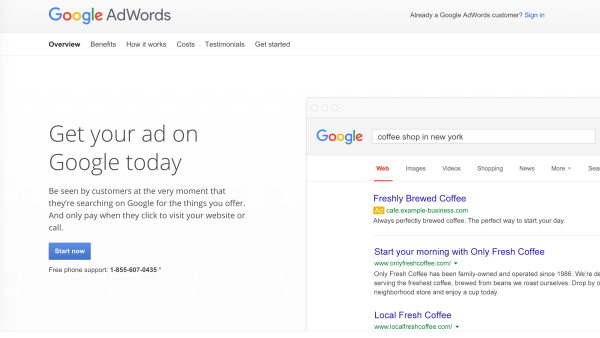
With over two million AdSense publishers (people that allow Google Ads display ads on their sites), it’s easy to see how you can reach just about any audience you can think of. And now that the Display Network has multiple targeting options to choose from, you can quickly fine tune your campaigns to meet your PPC needs.
BuySellAds
With direct access to hundreds of high-end sites with high engagement rates, BuySellAds allows you to buy direct impressions in specific placements on sites that you choose.
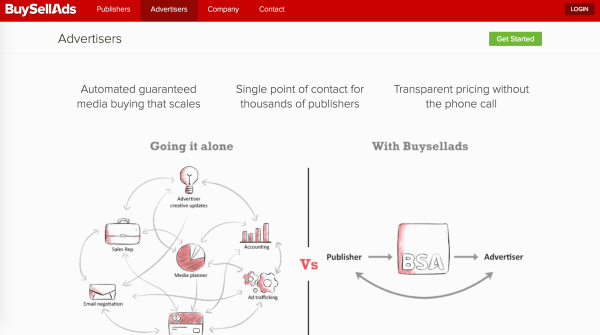
Ranging from display ads, sponsored content, and custom units, BuySellAds can help you find your perfect placements at increments of 1,000 impressions.
Drill down to desired placement categories or pick multiple individual placements. It’s up to you.
Other Display PPC Options
Here are a few other Display PPC options to consider as well:
Retargeting PPC
You got the original click, but not the conversion. So how do you retarget past visitors to bring them back to finish the process?
Get ready to meet some different retargeting platforms that help you retarget visitors no matter where they are. (Note: this is not applicable to the woods. Yet.)
AdRoll
AdRoll helps advertisers quickly set up brand new retargeting campaigns in a snap.
With their simple interface, you can choose to retarget through regular display/content sites, or you could choose to target past visitors on Facebook or Twitter (this is what made AdRoll famous in the beginning).
You can also take advantage of AdRoll’s Dynamic Creative ads and showcase them within Facebook as well.
Google Ads Remarketing
Using the Google Ads Remarketing interface (notice how Google calls it remarketing, not retargeting) is great when you’re already using it for Search and/or Display.
Inside of your Google Ads interface, you can create as many custom audiences as you’d like and additional targeting criteria within your remarketing ad groups.
You can also import audiences from Google Analytics that have certain criteria like time on site, for example, and even use Remarketing List for Search Ads (RLSA) to have new ad messages/bids on the Search Network.
Basis
Basis (formerly SiteScout) is a hybrid PPC channel as it can do much more than just regular PPC retargeting.
In addition to your traditional image and text retargeting ads, you can also create retargeting audiences based on certain links that they click, to then cookie their browser and retarget them later with whichever message you prefer.
Other Retargeting PPC Options
Here are some other retargeting PPC options you might want to consider:
Programmatic PPC Marketing
According to Marketing Land, programmatic advertising helps speed up the PPC campaign creation by automating the targeting process of specific audiences and demographics within your ROI goals.
In the world of PPC, this means that huge budgets are being set on “smart autopilot” to find new pockets of profitability in the online world.
Here are some of the options you have when it comes to programmatic PPC:
Adobe Advertising Cloud
The suite of tools in Adobe Advertising Cloud is a marketer’s dream (a marketer with deep pockets).
With Dynamic Creative Optimization and programmatic functionality, Adobe Media Optimizer can help you take PPC to the next level through search, display, social, and analytics.
Since many of the biggest brands use Adobe’s solutions, it’s easy to see how having one platform to handle everything makes sense.
Quantcast
To paraphrase Robert Palmer, Quantcast is anything but typical.
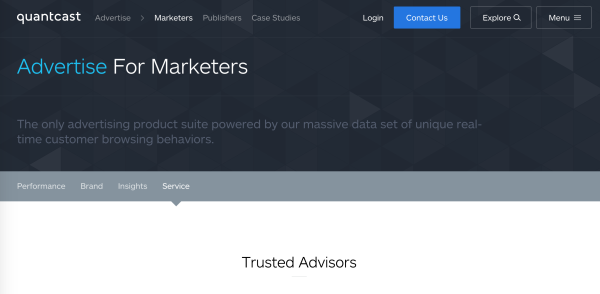
With their humongous access to countless data points, Quantcast can help you target real-time browsing behaviors with their programmatic offerings.
By using a mix of both prospecting and retargeting, Quantcast brings in big data to get the most targeted conversions with little to no wasted dollars.
Other Programmatic PPC Options
Here are a few other programmatic PPC options you can consider:
Mobile/App PPC Marketing
If you’re promoting any type of mobile offer (like an app), knowing which mobile PPC solutions are out there is absolutely vital.
From going directly through Google Ads to more specific and premium ad creative and placements, mobile-specific PPC advertising is here to stay.
So let’s take a look at some of your opportunities.
Kargo
Custom fonts and colors ensure that advertiser or sponsored content blends in with editorial.
But you'd never associate the word “sexy” with “mobile ad” until you saw a Kargo ad.
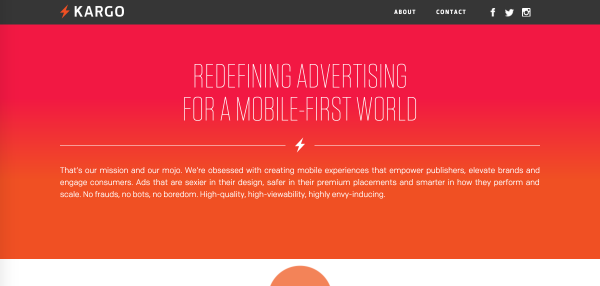
Not only does Kargo work directly with some invitation-only marketplaces, but their in-house creative team actually builds out your ads to comply with their and the publishers' requirements.
They even claim to be able to reach 80% of all U.S. smartphone users with unique ad twists that involve gamification, native, programmatic and more.
AirPush
Through in-app and mobile site advertising, AirPush can help get to your desired conversion rate and cost per conversion goals.
With an impressive display of exclusive brand case studies, AirPush uses a three-pronged approach to deliver mobile results at scale.
First, they help with the creative design.
Second, they help on the media buying.
And lastly, their programmatic solution automatically helps optimize your campaigns by excluding audiences that aren’t performing well and doubling down on the high performers.
Apple Search Ads
Advertisers and publishers can use Apple Search Ads to monetize apps and/or find new app users.
If you decide to use Apple Search Ads, then you can even advertise within native Apple apps like News and Wallet and also have them show up on your target’s wrist through their Apple Watch.
Other Mobile/App PPC Options
Interested in other mobile/app PPC options? Here are a few to consider:
Content PPC Marketing
Let’s say your goal isn’t to drive immediate conversions.
Maybe it’s to increase the readership of your blog, get more social shares, or to use content to gain trust.
If that’s the case, you’ll love this section where we dive into content PPC channels that help you amplify your content’s reach.
Outbrain
In its simplest form, Outbrain basically helps you promote your content via paid spots on other publisher sites.
You’ve most likely seen these Outbrain ads before. They often appear below other original articles, and most of them are, unfortunately, sensationalist click-bait. But, if you have a great twist on a story (like Dollar Shave Club) then you can turn boring industry content into something worthy of being clicked on.
Within Outbrain, you can choose which geographic locations and devices your sponsored content should show in and on, along with custom max bids and budgets you set.
Taboola
Very similar to Outbrain, although Taboola has less reach.
Moz has a useful post comparing different success metrics in Taboola and Outbrain by promoting the same piece of content.
SimilarTech also has a very nice head-to-head comparison of the two services, ultimately declaring Taboola the winner with more website connections than Outbrain.
Quuu
Quuu isn’t exactly a content PPC channel yet, but I would expect it to become one soon.
If you’re lucky enough to be approved as a curator like us here at KlientBoost, you can essentially submit your posts to a specific category and get up to 100+ Buffer shares depending on the category for free.
The tool also helps you add new, relevant, and interesting posts to your current Buffer queues, so you don’t need to spend time curating yourself.
Other Content PPC Options
Here are some other content PPC options you can consider:
Video PPC (aka Pay-Per-View)
Did you know that, after Google, YouTube is the largest search engine in the world?
And the problem for Google (and the good news for you) is that not a lot of people are taking advantage of YouTube's advertising opportunities.
Cost per views can be as low as $0.01, making YouTube and other video PPC channels a profitable source of conversions.
YouTube
It’s no secret that YouTube should be part of your PPC arsenal. The only downside is that it isn’t exactly cheap to split test video ads.
With cheaper and cheaper options like Fiverr, however, you really have no excuse to not get your feet wet.
YouTube options like in-stream and in-display video ads give you heightened control. You can target channels, individual videos, or regular demographics like you would in a Google Ads Display campaign.
Facebook Video Ads
Just like traditional Facebook ads, you can create video ads easily by adding text and targeting your specific audience.
With Facebook Video Ads, you can also track viewing metrics like you would with YouTube video ads. You can see, for example, if users are watching an entire video or just the first few seconds, and make adjustments accordingly.
Further, Facebook says that video ads can get up to 2.5x higher click-through-rate and the cost per video play can be as much as 5.5x lower than a traditional Facebook image ad.
SlideShare
Did you know it’s now possible to add videos to your SlideShare uploads?
You can also embed lead collection forms to that SlideShare by creating a new campaign with a total budget and geographic targeting.
In the same way that social media outlets are incorporating video (like Pinterest’s Promoted Pins), SlideShare’s Pro Account allows you to upload videos within your slide deck and adds in viewer statistics too.
Other Video PPC Options
Pay Per Call PPC Marketing
Does your business live and die by phone calls?
Wouldn’t it be amazing to only pay for phone calls, and not clicks or impressions? That’s exactly what pay per call promises.
And as mobile marketing continues to grow, not thinking about generating phone leads borders on foolish. Here are the top options you have when it comes to paying per phone call:
RingPartner
Promising only to have advertisers pay for quality calls, RingPartner helps connect businesses looking for phone leads to the sources generating those calls.
Pairing their service with a call intelligence tool like Invoca can help you put your inbound call efforts on autopilot while tracking and improving your sales reps and other PPC efforts as it can double as conversion research as well.
YellowPages
Trust me, I thought the YellowPages were dead as well. But then I saw that they actually offer a pay per call solution.
With a huge network of publishers that include UrbanSpoon, Dex, and Yahoo! (among others), YellowPages states that you can create your own ads through their platform and only pay when your phone rings.
CallX
CallX is a marketplace that allows you to buy and sell phone leads.
By setting up your own criteria and the types of calls you want, CallX can sell the phone leads to you in batches as small as 10 or as large as 1000.
Even though the buying phone leads has been alive since the boom of radio and print advertising, CallX has carved out a nice little spot for themselves with the continuing rise of mobile usage.
Other Pay Per Call PPC Options
Here are some other pay per call PPC options you can consider:
Affiliate PPC Marketing
Want other people to sell your stuff?
If you’re okay with paying fair commissions, affiliate PPC may be your new favorite PPC marketing channel.
Selling info-products, SaaS solutions, or physical goods? Then you might want to consider using one of these channels too.
Your affiliate marketing partners will typically have two concerns:
- Their commission from each sale
- The vertical your offer is in
You’ll usually find that weight loss products do well when it comes to affiliate PPC, for example, but you can also succeed with your specific product or service if you reach the right audience with the right message.
Affiliate PPC marketing is how Wire Cutter, Snapsort, and Smart Passive Income grew their brands dramatically.
ClickBank
ClickBank is known as the biggest affiliate/commission PPC channel out there. You have a product and you give other people the option to sell it for you.
You can even see their best performing offers to get ideas on how to package your own offer.
CJ Affiliate
With a high focus on eCommerce advertisers, Commission Junction (CJ) Affiliate, allows you to reach a similar affiliate audience as ClickBank with a CPA (cost per acquisition) payment model.
This means that you set the specific commission you’re willing to pay for each sale, while your affiliates go out and pay for the traffic themselves.
With this model, your campaigns will be more effective if you have image ads and marketing collateral ready for them to use, so they can start promoting you right away.
MySubscriptionAddiction
MySubscriptionAddiction (MSA) isn’t exactly a juggernaut when it comes to affiliate PPC, but I wanted to highlight it since it’s pretty niche.
With MSA, you can pay to promote your subscription service (think BarkBox, BirchBox, or some other "B-Box") to an audience of people who are borderline addicted to having things delivered to them every month.
Through MSA, you have the options of having them promote you via giveaways, coupon codes, or ad space. It’s up to you to figure out which works best.
Other Affiliate PPC Options
Here are some other affiliate PPC options you might want to consider:
Keyword + Targeting Options (Infinite Servings)
Once you’ve found which PPC channels to use, it’s time to learn which keywords and ads you need to create.
To do this, you have two options:
- Start researching keywords and ads from scratch.
- See what your competitors are doing.
I always recommend a mix of both for two reasons:
- Copying what your competitors are doing doesn’t always work.
- Piggybacking on what does work is a great shortcut.
Let’s take a look at some keyword research tools you can use when it comes to Search Engine PPC.
Keyword Research Tools
Many people will tell you to go after long tail keywords to find “cheap niches”. But beware.
Many times, your competitors are already bidding on the shortest tail keyword with either a modified broad match (+) or a phrase match (“) keyword. If that’s the case, their ads will most likely still show alongside yours.
The only time you can really take advantage of long-tail keywords and score a cheaper cost per click is when you use single keyword ad groups (SKAGs) and uber-specific ads.
Here are some keyword research tools you can tap into:
Google Keyword Planner
Google Keyword Planner is Google’s flagship research tool that gives you insight into competition levels and average cost per clicks.
UberSuggest
Consider UberSuggest a free version of Google's auto suggest. It gives you the top searches for longer tail keywords, as well as the volume, the competition, and even seasonal trends for each keyword.
Competitor Meta Tags
By looking at competitors' source code, you can see which keywords they’re wanting to potentially rank for.
There's no problem with taking these and bidding on them for PPC purposes. Just don’t use your competitors' trademarks as your own meta tags.
There are lots of other keyword research tools out there. The ones above are the ones we find the greatest use from here at KlientBoost if you're building a list of keywords from scratch.
One thing to keep in mind is understanding the intent behind the keywords you want to bid on. You can reach far and wide for keywords, but some don’t have the same potential for conversions as others do.
PPC Spy Tools
If you want to be quick and take some shortcuts, you can always take a look at which keywords your competitors are bidding on.
I wrote an in-depth post analyzing quite a few PPC spy tools that you can use. Here are the top three:
SpyFu
SpyFu has a really cool feature that allows you to see a Venn diagram of your own and two competitors’ keywords. You can click on any part of the Venn diagram to only see certain keywords that you might not be taking advantage of.
iSpionage
iSpionage can drill down on your different competitors (both past and present) and sort between Google and Bing to see which keywords they’re bidding on.
SEMrush
In addition to seeing which keywords you’re bidding on, you can use SEMrush to see Shopping Campaign and Product Listing Ad (PLA) intel, along with YouTube ad insights.
Display Targeting Tools
So you've got the search networks locked down. What about the world of display?
As you've seen, there’s no shortage of display networks or channels. So how do you even begin to know where to place your ads or what options to target?
Enter display targeting tools.
WhatRunsWhere
WhatRunsWhere not only helps you see where your competitors image ads are hiding, but it also tells you:
- Which display channels your competitor is using
- What demographics see their ads
- Which specific URL placements their ads are on
- How long the ad has been running
- The popularity of different text/image ads
NOTE: Check out the five other competitor display tools covered in this post.
If you don’t want to target direct placements, you can use regular display targeting options.
Let’s take a look at the different targeting options you have within the Google Ads Display Network (the biggest one there is):
Targeting Options in Google Ads Display Network
Placements: These are direct URL targetings you can do with any website that offers AdSense ad space.
Contextual: You give Google Ads some keywords and it will find placements for your display ads to be on.
Interests: Groups of people with similar browsing behavior.
Affinity: People with long-term interests, like gardening.
In-Market: People who have already bought products in your niche.
Topics: Groups of websites that cover a specific topic. You can target these as a whole if you know your target audience is into a specific topic that’s available.
Demographics: These points involve age ranges, gender, and parental status.
Geography: You can target people only within a city or the entire world.
Language: You can target people who have their browser and/or Google settings set to a certain language. This is particularly useful if you want to target a certain language demographic within a country that speaks another language.
Keep in mind that you can mix and match multiple display targeting criteria to make your audience more specific. If done right, then this will usually yield less traffic, but higher conversion rates.
Ad Creation + Split Testing (Infinite Servings)
So you have your targeting criteria ready (your keywords and placements), next up is ad creation.
When it comes to PPC, you have a lot of options with different ad formats. Depending on the PPC channel, you’ll usually find that the most common PPC ads look like this:
- Animated image ads
- App install ads
- Lightbox ads
- Product listing ads (eCommerce)
- Rich media ads (interactive ads)
- Static image ads
- Text & call only ads
- Video ads
Not all ads work on all PPC channels, so keep that in mind when you know what PPC channels you want to use. Image ads won’t work on search engines unless it’s a product listing ad (PLA), for example.
You’ll usually find that it’s safest to keep your image ads' file size at 150 kB or less.
When it comes to the dimensions of image ads, here are the most common dimensions in pixels (keep in mind that not all publishers accept all ad sizes):
- Wide skyscraper: 160 x 600
- Half-page: 300 x 600
- Large leaderboard: 970×90
- Large mobile banner: 320 x 100
- Billboard: 970 x 250
- Portrait: 300 x 1050
- Panorama: 980 x 120
- Top banner: 930 x 180
- Triple widescreen: 250 x 360
- Netboard: 580 x 400
- Banner: 468 x 60
- Leaderboard: 728 x 90
- Mobile leaderboard: 320 x 50
- Square: 250 x 250
- Small square: 200 x 200
- Large rectangle: 336 x 280
- Inline rectangle: 300 x 250
- Skyscraper: 120 x 600
Once you have that done, here are the file types behind the most accepted ad formats:
- CSS
- JS
- HTML
- GIF
- PNG
- JPG
- JPEG
- SVG
Note: Some PPC channels don’t accept certain image dimensions or image types. It's always key to know which ones work for your PPC channel before building them out.
Text Ad Creation
Awesome, you’re moving along and have everything ready so far.
Now, let’s take a look at the tools you can use to split test text and image ads at scale.
AdBasis
If you’re a fan of automation, then you’ll love AdBasis. By keeping your connection between keywords and search terms, AdBasis will allow you to scale your text ad testing by using dynamic content.
Optmyzr
Created by a former employee of Google and now evangelist of Google Ads, Optmyzr is a suite of tools that allow you to automate your Google Ads activity.
With quick One Click Optimizations, Optmyzr allows you to set your criteria for success and have the tool alert you when action is needed.
No more going back to the Google Ads account fridge and opening it for no reason.
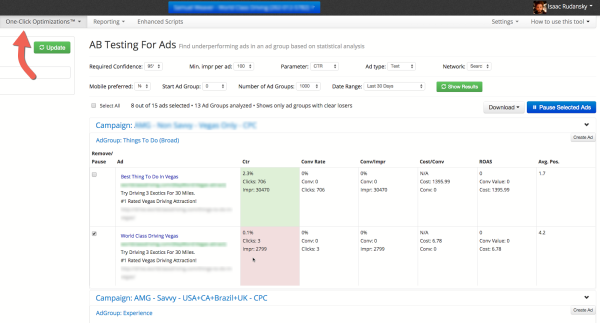
When split testing your text ads, you should only pause losing ads if your tests produce a high confidence level and your ads have run for a statistically significant length of time.
Depending on your ad testing goal (most likely a higher conversion rate), you can use this confidence level calculator from Kissmetrics or this Google Ads script that automatically labels winners and losers in your ad groups.
Another thing to consider is tracking the length of time an ad has run. To avoid manually adding start date labels in your Google Ads account, you can use this Google Ads script to track dates automatically in a Google spreadsheet.
Finally, if your PPC channel has the option, give all of your ads (both text and display) a fair shake at winning. In Google Ads, you can change your ad rotation setting to “rotate indefinitely” to take care of this.
Display Ad Creation
Once your text ad testing is in place, it’s time to move on to display ad testing.
You have a lot of different options in this space. We’re just going to focus on the tools that will help you test across the bigger display networks.
Google’s Display Ad Builder
Google’s Display Ad Builder is a free tool within the Google Ads interface that will help you build image and dynamic ads at scale in different variations. You upload your logo, imagery, a link to your site, or pick from their template library and it will take care of the rest.
Export only what you like and start testing with real traffic.
AdEspresso
AdEspresso is an awesome tool built specifically for running and split testing Facebook campaigns.
It allows you to quickly create hundreds of different ad combinations in minutes and gives you actionable advice on the performance of your Facebook campaigns.
Celtra
If you’re ready to just not spend any time on your creative, but would rather automate to the “nth” degree, then programmatic creative is something to consider.
Celtra has a platform that allows you to combine multiple data sources to creative hundreds (if not thousands) of different ad variations to split test for higher click-through-rates and conversion rates.
Oh, and the crazy part? They’re creating their own ad formats at an alarming rate. Like this one called the “reveal banner”.

Landing Page + Conversion Optimization (2-3 Servings)
Running PPC campaigns without conversion rate optimization is like making a peanut butter & jelly sandwich with just jelly. You gotta have the peanut butter too.
(By the way, the peanut butter half is definitely the better half. Fight me in the comments section.)
Now that you have your PPC targeting and creative in place, where are you going to send that traffic?
Landing Page Builders
If you’re trying to generate leads, trials, or subscriptions, then consider using a landing page solution like one of the ones below.
Unbounce
Unbounce is biggest landing page builder out there. With more employees, templates, and content to support your split testing dreams, Unbounce helps you customize any part of your landing page, without any help from your IT team.
Their other neat feature that’s worth mentioning is Dynamic Text Replacement, which makes your landing page text specific to the keyword and ad so your message match game is always on point.
Instapage
Instapage has a cool brand and a lot of different templates to choose from.
From lead captures to click-throughs, you can find a template that fits your need and make it specific to your brand. Every template is mobile responsive as well.
LeadPages
LeadPages is a fast-growing and well-funded landing page builder.
We don’t use their tools ourselves, but the biggest things I hear about LeadPages is that it’s a quick plug n’ play system that allows you to capture leads outside of landing pages too.
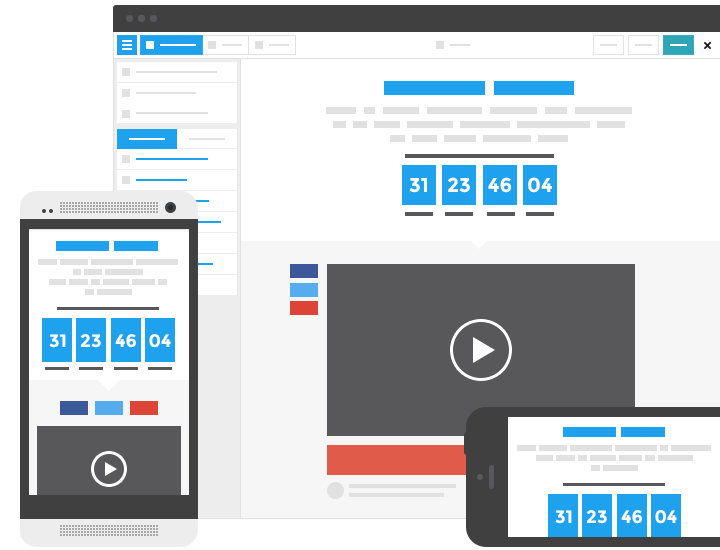
On-Site Conversion Tools
If you’re an eCommerce shop or have to send traffic to your website because of backend complexity, then consider one of these conversion testing tools. Bonus: these tools don’t require you to know any code.
Optimizely
Not to be confused with Optmyzr, Optimizely allows you to split test almost any change on your site without changing any actual code.
Besides regular split testing, Optimizely also offers:
- Multivariate Testing
- Revenue Tracking
- Split URL Testing
- JavaScript API
It’s by far the most enterprise-style tool for on-site testing, and it offers some premium features that other, less expensive tools don’t.
VWO
Short for Visual Website Optimizer, the VWO platform is a cheaper solution that’s perfect for many website owners.
In addition to some of the things that Optimizely offers, VWO also has integrated heatmaps/clickmaps to use as part of your conversion research prior to running any tests.
Just like Optimizely, all you have to do is add one code snippet to your site and you can test as much as you want.
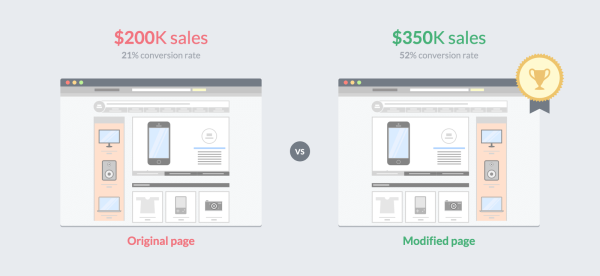
PPC Analytics + Scripts + Bidding (2-3 Servings)
If you’re serious about improving your diet PPC performance and follow a steady program, then you need to be able to track your results.
No time or money can be well spent if you don’t know if things are moving in the right direction.
PPC Conversion Tracking Tools
PPC tracking tools tell you what works and what doesn’t so you can be smart about budget allocations.
Conversion Tracking
Most PPC channels offer some type of Conversion Tracking in the form of JavaScript codes.
Conversion tracking tells you which keywords, ads, placements, and campaigns are performing the best so you can judge based off cost per conversion numbers.
Call Tracking
If you accept incoming calls as a form of conversion, knowing what makes your phone ring will be absolutely vital.
Outperforming all types of leads by over 80%, PPC calls are known to lead to an average conversion rate of 20-30% compared to 1-2% of other digital leads.
Invoca is a call intelligence software solution that not only tracks PPC calls, but can help you automate your conversion research and reverse engineer spoken words and sentences from phone calls to drive your ad testing.
CallRail is the call tracking solution used by most PPC agencies and smaller to medium sized businesses. Their interface is extremely intuitive and their JavaScript will automatically swap out numbers on your landing page or site to track which keyword or ad placement was responsible for the call.
Chat Tracking
If you use live chat as a conversion channel, tracking these conversations is just as important as call tracking.
One popular live chat tool is Olark. With Olark, you can customize when you want a conversion to be recorded like when the visitor messages the operator.
PPC Attribution and Analytics Tools
Google Analytics – Most PPC advertisers use Google Analytics in addition to their in-channel reporting.
Google Analytics can provide additional insight like average time on site, bounce rate, and more, down to the PPC keyword level.
You can also look into attribution within the Google Ads interface. Google Analytics also offers something similar called the Model Comparison Tool to understand how many steps a visitor took to perform a conversion.
This is important since many conversion tracking tools give all the conversion credit to the last click, and not the seven clicks that happened prior.
Attribution Modeling: Other tools you can use for more holistic PPC attribution include the likes of comScore, which measures branding impacts; Adometry, which measures offline and online attribution; and Woopra, which details your entire funnel movement down to the keyword and ad level.
PPC Quality Score Tools
If you improve your Google Ads quality scores, your clicks will ultimately be cheaper. In fact, you can pay less per click and outrank your competitors if your quality scores are better than theirs.
These tools can help with that.
Tenscores
Tenscores is a tool that gives you insight into what you can do to improve your quality scores, down to the ad group level. Which will ultimately lead to cheaper cost per conversions and higher margins for you.
If that doesn’t get you excited to try it out, then their homepage hero shot should.
PPC Bidding Solutions & Tools
You’ve almost reached the finished line, and your PPC diet is looking stellar.
Now that you have your traffic and performance benchmarks, it’s time to fine-tune your bids so that you don’t overpay or miss out on any opportunities.
The following tools will help you automate your bidding based off specific rules that you set.
Google Ads Bid Strategies
Google Ads' Flexible Bid Strategies are pretty cool. There are currently six different types of bid strategies you can take advantage of. They are:
- Maximize clicks: Try to get as many clicks within your daily budget.
- Search page location: Adjusts bids to help your ads appear at the top.
- Outranking share: Helps you outrank a specific competitor domain.
- Cost-per-acquisition (CPA): Adjusts bids to achieve your goal conversion cost.
- Enhanced cost-per-click (eCPC): Adjusts bids up or down to improve likelihood of conversion.
- Target return on ad spend (ROAS): Helps you reach a certain ROI percentage you set.
Google Ads Scripts
Google Ads Scripts require a little bit of coding/programming knowledge to take advantage of.
With Google Ads scripts, you can take advantage of weather pattern bid changes and stock volumes if you have an eCommerce store to automatically pause the promotion of a specific product.
And that’s just the tip of the iceberg.
Google Ads Automated Rules
Google Ads' Automated Rules are a step down the complexity scale from Google Ads scripts. But with these automated rules, you can pause, adjust, and launch certain aspects of your Google Ads account based on your custom settings.
Marin
If you’re looking to control mostly all of your PPC channels in one place, Marin could be your solution.
Allowing you to control you social, search, and display campaigns, Marin can help you automate your bidding and optimization with their simple workflow philosophies.
Kenshoo
One of Marin’s biggest competitors, Kenshoo allows you replicate what Google Ads Editor does, but with way more features and benefits.
One of their solutions is the Portfolio Optimizer, which focuses on improving your profits, not just your conversions or conversion rates.
In addition to bidding, attribution, and automation rules, keep in mind that both Marin, Kenshoo, or other competitors like Acquisio or AdCore aren’t cheap.
They usually charge a percentage of your ad spend, so consider them if the resources saved on manual work can be automated by these tools.
What’s Next?
If you thought this post was exhaustive, there are over 2,000 individual marketing technology companies out there, and the growth isn’t stopping anytime soon.
From data points to automation, if there’s a tool out there that doesn’t satisfy your needs, just wait a few weeks. I’m sure it will show up, just like that new type of taco Taco Bell just introduced last week.
What parts of a well balanced PPC diet did we leave out? Add your thoughts in the comments and let us know.
Thanks to William Harris for giving us the idea to create this post with his SEO Food Pyramid :)
So let us know -- what do you think is the best Keyword Research Tool?
a) Google Keyword Planner
b) FreshKey
c) Other
We’d love to read your responses in the comments below.



